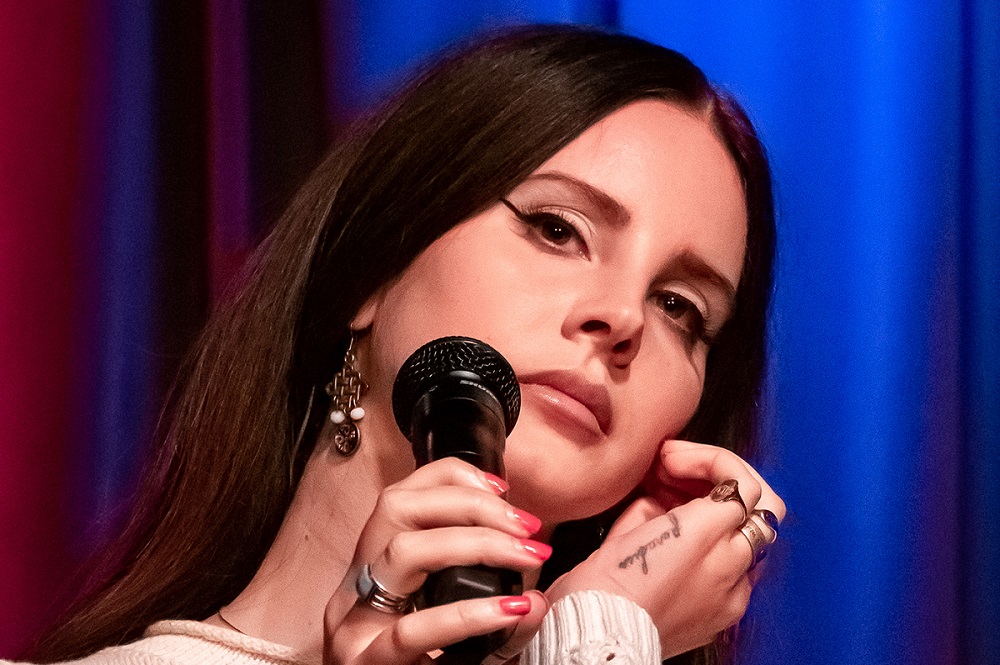Lana Del Rey: A Siren Song of Cinematic Sadness and Vintage Dreams
Since her quick ascent to fame in the early 2010s, Elizabeth Woolridge Grant, better known by her mysterious stage name Lana Del Rey, has had a significant impact on the music industry. Her music conjures up a world of cinematic misery, Hollywood elegance, and a mournful longing for a past that may never have existed. It’s a heady blend of alternative pop, rock, and trip-hop.
From Folk Beginnings to L.A. Noir
Lana Del Rey was born in New York in 1985, and her career as a musician started off as Lizzy Grant. Her early albums, such as “Lana Del Rey” (2010) and “Sirens” (2008), are self-released and exhibit a more folk-infused feel. The elements that would ultimately come to define Lana Del Rey’s sound—lost love, Americana nostalgia, and an interest in the darker sides of desire—were alluded to in these less polished recordings.

But what really shot her to fame was the development of the Lana Del Rey character. Her sultry vocals and distinctive vintage style created a universe evocative of L.A. noir and vintage Hollywood movies. The name itself was purposefully created, with “Del Rey” lending a hint of mystery and “Lana” recalling famous actresses.
Viral Success and the Birth of “Born to Die”
Her big break came with the tune “Video Games” from 2011. The song struck a chord with a large number of people due to its eerie melody and lyrics about a failed romance set against the sunny backdrop of California. Her visual identity was cemented with the accompanying video, which featured a mix of Hollywood decadence and old pictures. Her critically acclaimed debut album, “Born to Die” (2012), was made possible by her viral fame.
The album became a cultural phenomenon, a sonic tapestry weaved with trip-hop beats, dreamy vocals, and lyrics pouring with longing for Americana. Songs like “Blue Jeans” and “Summertime Sadness” introduced her distinctive sound, which combines pop sensibilities with a melancholy beauty. The album received mixed reviews from critics; some praised its unadulterated passion and vivid storytelling, while others took issue with its idealized depiction of damaged relationships and apparent inauthenticity.

Themes and the Art of Melancholy
The music of Lana Del Rey explores intricate issues. Love is an ongoing investigation, frequently sad or dysfunctional. She sings about broken hearts, hopeless romances, and compulsive infatuation. Her vision goes beyond romance, though. Her lyrics are full of vivid imagery that alludes to the darker side of the American dream, classic literature, and American pop culture. A persistent feeling of longing for a romanticized, possibly unreal past is present.
Cinematic Storytelling and the Power of the Visual
The visual component of Lana Del Rey’s craft is intrinsically linked to her musical style. She frequently directs her own music videos or those of her partner Anthony Mandler, creating immersive cinematic experiences. They honor classic movies with scenes that often include historic vehicles, lavish estates, and the Californian countryside. Her songs’ topics are ideally complemented by the sorrowful beauty of the pictures.

Controversy and the Feminist Critique
Even with her unquestionable impact, Lana Del Rey’s music has generated a lot of controversy among critics. Some people take issue with her songs because they romanticize unhealthy relationships and present a submissive image of women. There have also been accusations of inauthenticity about her frequent references to money and celebrity. Women’s identities are frequently shaped by their encounters with violent men, as feminist critics have noted. In defense of her writing, Lana Del Rey has stated that her characters are nuanced and not intended to be idealistic. She highlights the freedom artists have to explore themes of female desire and depravity.
Evolution and Enduring Legacy
There is no denying Lana Del Rey’s influence on popular culture. Numerous musicians of all genres have been influenced by her music, and her aesthetic has become a point of reference for fashion trends. She has constantly defied expectations and refused to fit into a specific genre or style.

Her music has demonstrated a propensity to change throughout time. Rock and psychedelic influences were included into albums like “Ultraviolence” (2014) and “Honeymoon” (2015), while a more introspective tone was featured on “Lust for Life” (2017), which also featured a collaboration with the renowned feminist poet and musician Grimes. Her most recent release, “Did you know there’s a tunnel under Ocean Blvd” (2023), features spoken word and folk elements in a minimal, reflective tone.
Conclusion: A Siren for Our Times
The allure of Lana Del Rey’s music never fades. It’s a depressing siren song that conjures up a lost world.
